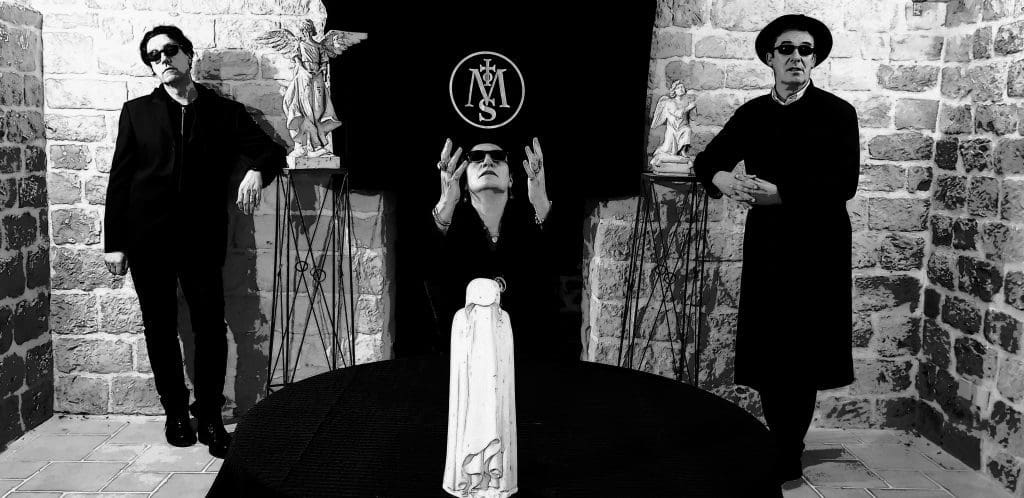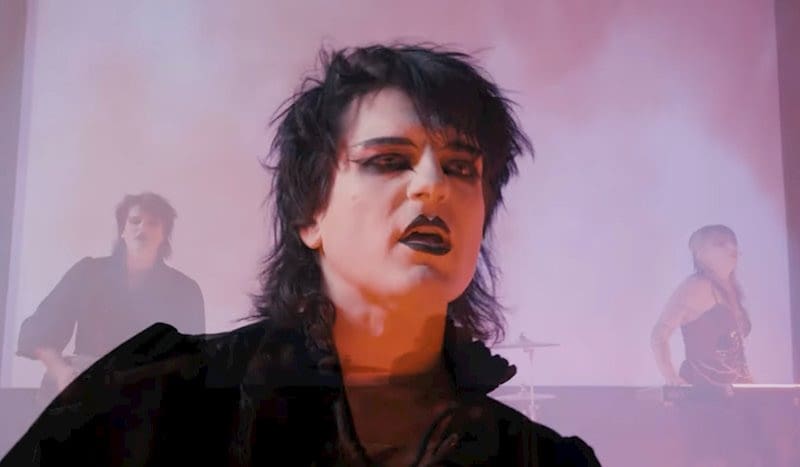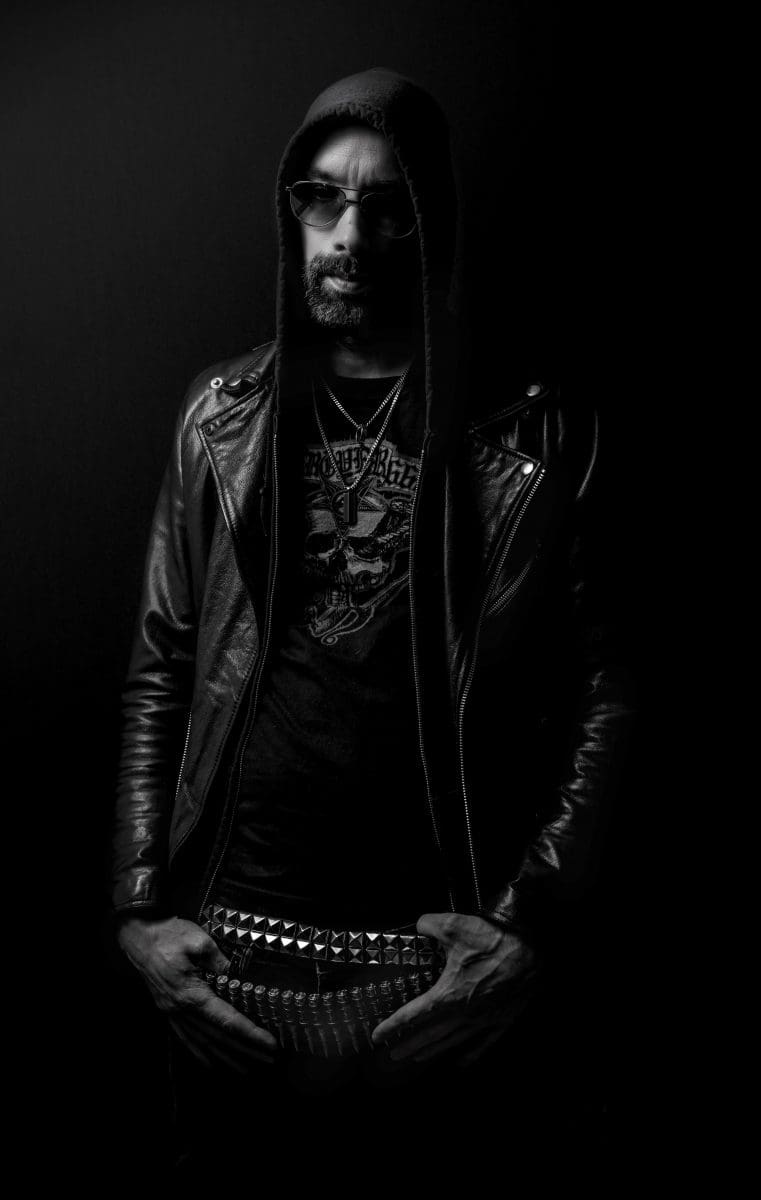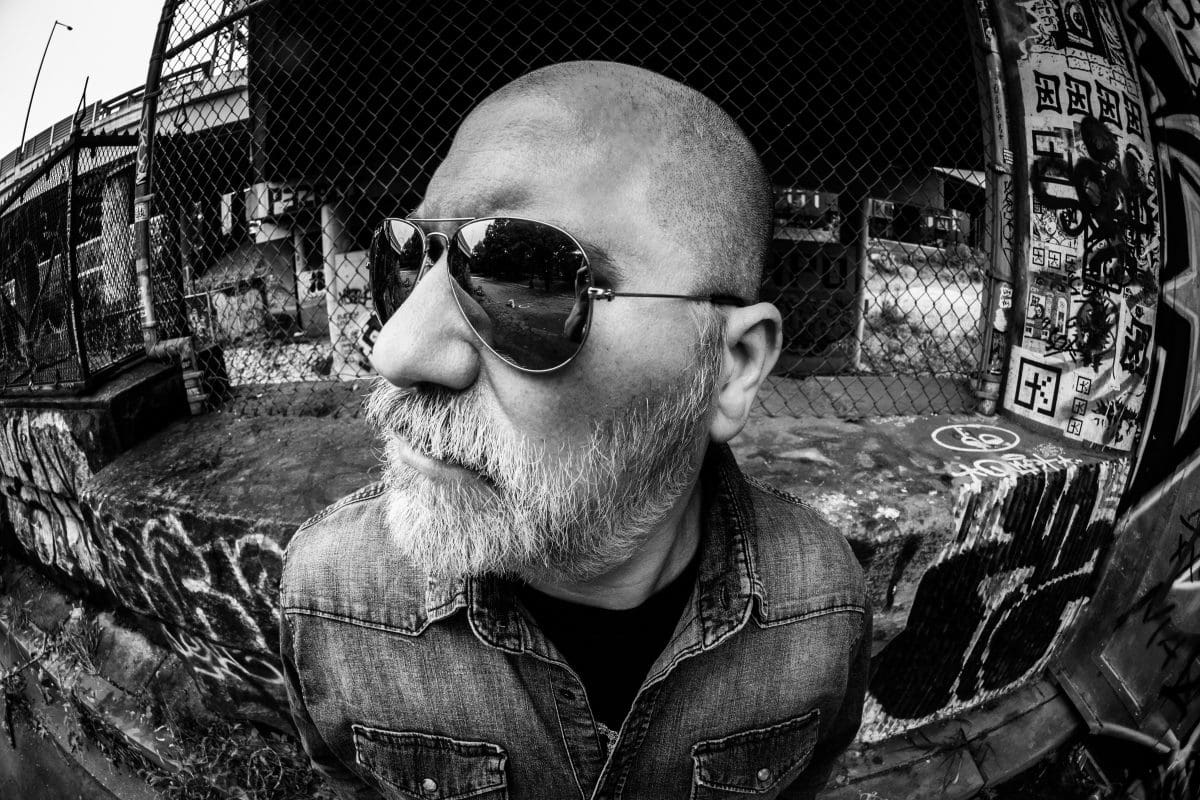Click Interview with Opera Multi Steel: ‘No More Ego Problems For A Very Long Time Now’

The twelfth album “D’une Pierre Deux Tombes” by the French formation Opera Multi Steel has been composed by the original line-up. Franck Lopez, Patrick L. Robin and Catherine Marie set up the band in 1983. “D’Une Pierre Deux Tombes” released by Wave Records is a very intimate work about the loss of the members mothers. Poetry and melancholic Dark-Wave & Dark-Pop music have been merged together creating a poignant, posthumous, tribute.
(Courtesy by Inferno Sound Diaries)
Q: Opera Multi Steel is now active for nearly forty years! How do you look back at this amazing adventure and what’s the importance of Opera Multi Steel in your life?
Franck L: If we had been told forty years ago that we would still be active today, I am not sure we would have believed it. It was very difficult for us to find a place in France in the beginnings of the band, we were considered too atypical compared to many formations of the Indie movement of the time and we had to confine ourselves to self-production on our own label created for the occasion and on which we released our first albums up to “Stella Obscura”.
This one marked the end of the group’s first period. Recognition therefore came later thanks to a Brazilian label (completely unexpected!) which, after discovering our first works, released a compilation (“Days Of Creation”) which made us known there and which in the process produced the album “Histoires De France”. From this, curiously, the interest aroused by the group ends up returning to Europe. Since that time, support has continued to grow and apart from Wave Records, which has trusted us from the start, we can also mention the labels Triton (Germany) Meidosem Records (France), Dark Entries (USA), Infrastition (France), VOD (Germany)… which either through re-edition, compilations or production of original albums have enabled us to gradually broaden our visibility among the alternative scene. We are very grateful to them.
Catherine M: After all this time, if Opera Multi Steel still exists, it is simply because it is part of our lives. We can therefore assume that it will live as long as we have the strength and the creative energy to make it live and that the precious support of those who have long adhered to our aesthetics will continue.
Patrick L. R: Since I was a child, I’ve spent an important quantity of moments listening to the music through radio-shows, vinyl records and TV networks and I quickly decided to make music of my own. Because of this, Opera Multi Steel has always and will be definitely an important part of my life! Each moment of my existence since the beginning of the band has been rhythmed by its music and the flow of poetry I decided to write since the end of 1982 (the real beginning). I could not have imagined living without this meaning that gave me the possibility to stay really alive for forty years more. I swear and I promise to perform with this band until the end!
Q: How much of the ‘early’ Opera Multi Steel do you still recognize in your way of working, -writing, -lyrics and spirit today? And do you see contemporary bands reminding you to the ‘young’ Opera Multi Steel?
Franck L: Pretty hard to say. In fact, we have been composing and writing in the same way for all these years. At the beginning, we were probably more minimal than now, both by choice or by force of circumstances, and we used a little bit of everything that came to our hands. We discovered drum machines and polyphonic synths with the greediness of children discovering their gifts at the foot of the Christmas tree. We were not all great technicians and we touched a little on everything. Unable to imitate those who influenced us, we had no choice but to turn our shortcomings into a kind of strength. This is the way the group was born around an Elex synth, a Casio VL1 and a TR 606 rhythm machine, joined to a recorder and an old cheap Gibson copy bass.
Nothing has really changed since then, except that our sound has grown a lot and it’s more powerful. The whole thing sounds less minimalist. On the other hand, we have remained faithful to the sounds which rocked the birth of the band and which are the immediately recognizable mark of Opera Multi Steel. They are sometimes no longer played on the original instruments as at the time, but through various softwares. Other change, as time goes by, our lyrics have become a bit sadder and disabused that they were in the first years of the band. But it could be too long to explain…
In fact, among the groups currently claiming to belong to the Post-Punk/ Minimal-Wave label, which is ultimately very broad, we hardly find any equivalent to what we were, except here and there in the use of very connoted sounds which were our daily life at the time. Not sure that we have been emulators for some other younger musicians but we are not the best placed to say so. On the other hand, it is quite pleasant to note that groups that have not lived through the era that saw us born seek to rediscover and reinterpret it through their own work.
Q: Your new album “D’une Pierre deux Tombes” is an appropriated title for the concept or main theme of this work dealing with the loss of your mothers. Do we have to understand the album as part of your mourning process? And can you give us more details about the content?
Patrick L. R : Yes of course. Personally, I’s been a way to achieve the work of bereavement started since my birth (father and grandfather died when I was just one) then grandmother, then no mother. I had been prepared to that fatal eventuality so when my mother died, it did not surprise me. Rather than a real sadness, it gave me the very part of my life. I could imagine all those people assembled in a kind of Sky, maybe Heaven? all together now and waiting for us, the next ones on the list. This gave me the inspiration when I created the lyrics of this last album and the strength to the three of us to turn this mourning into music. Don’t know if they can listen to us, wherever they are now but the releasing of this album was for us the way to pay tribute to what they were.
Q: I can imagine your way of working has maybe been different because of Covid-19 restrictions. How did you manage this situation? What have been the different stages to achieve this work?
Franck L: In fact, Covid-19 did not really affect the development of this last album which was already composed, recorded and mixed just before the first confinement was proclaimed here in France. During the lockdown period we refined the graphic design of the album remotely with Hernan Czauski, Brazilian designer who made the cover from images that we had provided to him. Normally, we would have done the same anyway!!! We also produced the videos of the album remotely while exchanging images with Lexx Grave of Wave Records to the development of three clips of the album (“L’Après-Mort”, “Cimeterre” and “Jardin Du Souvenir”). The very first one, directed by French videographer Isthmaël Baudry on the title “L’Annonce” had been carried out before the health crisis. However, the release of the album has been postponed several times following the cumulative delays in the pressing factories due to the closures imposed during the health crisis and to think about them during each step of the creating process of “D’une Pierre Deux Tombes”
Q: After all these years working together there must be a true chemistry between you all. What makes this chemistry and what’s the input of each member? And how does it happen when there’re decision to make?
Franck L: Since this last album (“D’une Pierre Deux Tombes”) we have returned to our original trio formation (Catherine, Patrick and me) as we were at the time of our very first album “Cathédrale”. It is not wrong to speak about alchemy as it always seems so easy to compose and create together as soon as the three of us meet in the rehearsal room. No more ego problems for a very long time now, everyone brings their stone to the songs and the Opera Multi Steel-‘style’ is so integrated in each of us that everything has become over the years of great fluidity and great naturalness to the point that we no longer even have to censor each other to obtain a compromise. It practically happens by itself.
The involvement of each member is now well defined. I develop a large number of rhythmic patterns that we select together to know which ones will serve as bases for our future songs. Patrick on his side always has a large number of texts at his disposal (he writes all the time). From these two elements, lyrics and rhythms prepared in advance, we work out the pieces together, each finding their own instrumental or vocal lines generally played or sung by the one who created them. It is very rare that a four-hour session does not lead to the already very accomplished structure of a song. Chemistry, that’s the good word!
Q: I noticed your label Wave Records has released a box featuring the works you released as O Quam Tristis which was a side-project between Opera Multi Steel and Collection D’arnell-Andrea. I always saw a connection between both bands for the sound, influences and dark poetry. How do you look back at this experience and why did this project stop? What’s the next plan for Opera Multi Steel?
Franck L: Yes, Wave Records recently released a beautiful box set (“The Complete Works”) containing the whole 4 albums originally produced by “O Quam Tristis” on Palace Of Worms. This integral is accompanied by a bonus-CD containing rare titles, covers and various remixes produced by the band between 2000 and 2008. O Quam Tristis is not strictly speaking a side-project between Collection D’arnell-Andrea and Opera Multi Steel. Carine Grieg (Collection D’arnell-Andrea) had already participated as a vocalist in Opera Multi Steel albums like “Eternelle Tourmente” and “Une Idylle En péril” and I myself have been a Collection D’arnell-Andrea bass player for many years already. When we decided to set up this Electro-Medieval project largely based on female voices, it was only natural that we called her.
There is indeed a link between Opera Multi Steel and Collection D’arnell-Andrea that now goes back a very long way. This link undoubtedly goes beyond our poetic and musical styles which are all relatively distant: Dark-Wave / Cold-Wave for Collection D’arnell-Andrea and Dark-Pop / Minimal-Wave for Opera Multi Steel. Beyond the differences in style, we should probably look more in the care that we both bring to the particular aesthetics of our respective projects. It is probably also an old friendship story born around common artistic inclinations.
Catherine M: We carried out the O Quam Tristis project during a break of several years in the activity of Opera Multi Steel. It was an opportunity to explore more deeply our love for Medieval music and the Latin language on Electro rhythms. Towards the end of the 2000s a renewed interest in French New/Cold-Wave emerged. Several labels have offered to reissue the first works of Opera Multi Steel and the Brazilian label Wave Records has put us back in the saddle following the publication of the double compilation “Parachèvement De l’Esquisse”. So we focused on our original project again and we haven’t stopped creating with Opera Multi Steel since then. The O Quam Tristis parenthesis was therefore definitively closed with the album “Les Chants Funestes”. However, it’s not forbidden to think that this side-project may have belatedly influenced the way we now arrange the titles of recent Opera Multi Steel-albums, in particular the latest and most certainly the next ones.
Concerning Opera Multi Steel plans, we now have more than 20 new tracks ready to be mixed. Time will tell what they will become.
Since you’re here …
… we have a small favour to ask. More people are reading Side-Line Magazine than ever but advertising revenues across the media are falling fast. Unlike many news organisations, we haven’t put up a paywall – we want to keep our journalism as open as we can - and we refuse to add annoying advertising. So you can see why we need to ask for your help.
Side-Line’s independent journalism takes a lot of time, money and hard work to produce. But we do it because we want to push the artists we like and who are equally fighting to survive.
If everyone who reads our reporting, who likes it, helps fund it, our future would be much more secure. For as little as 5 US$, you can support Side-Line Magazine – and it only takes a minute. Thank you.
The donations are safely powered by Paypal.










